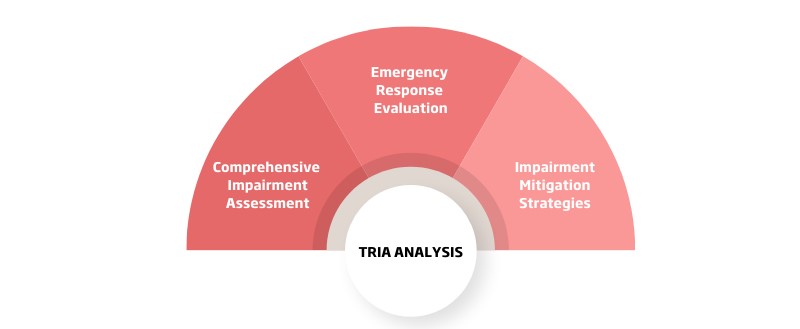Temporary Refuge Impairment Analysis (TRIA)
Temporary Refuge Impairment Analysis (TRIA) is a critical component of technical risk management, conducted to assess the effectiveness of temporary refuges in supporting escape, muster, evacuation, and rescue during major accident hazards (MAH). This analysis identifies potential mechanisms that could impair the functionality of temporary refuges, including,
- Smoke and gas ingress
- Heat build-up from personnel
- Oxygen depletion
- Carbon monoxide build-up in the bloodstream
- Fire impingement
- Explosion overpressure
Importance of TRIA
TRIA is crucial for maintaining a robust emergency response plan. By understanding potential impairments, organisations can implement necessary measures to mitigate risks and ensure the effectiveness of temporary refuges in protecting personnel.

